Mark your calendar!
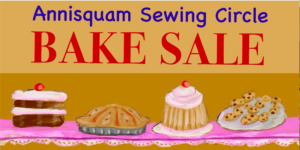 |
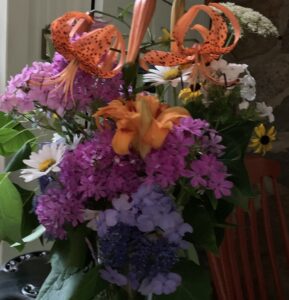 |
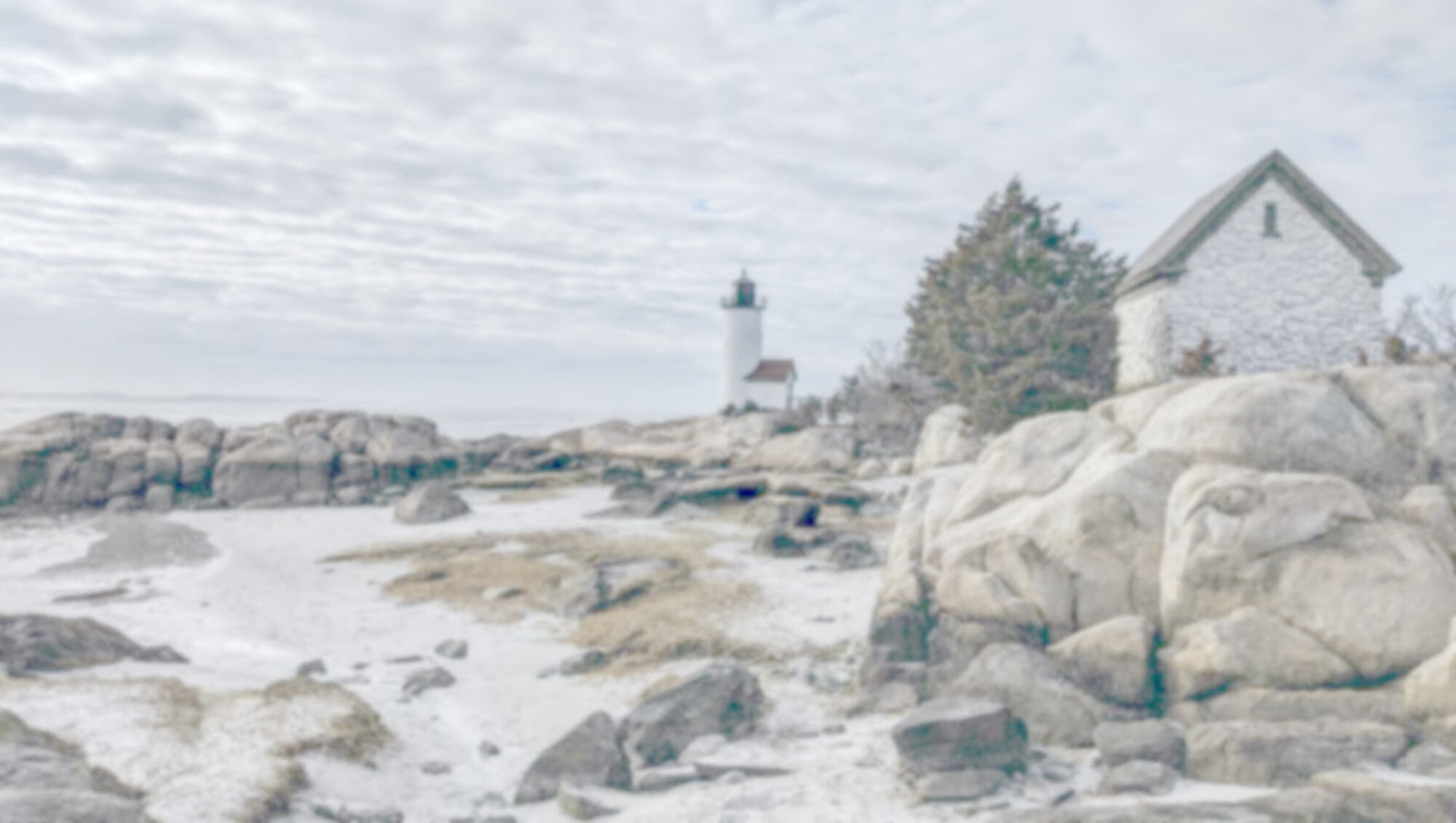
The purpose of the Annisquam Sewing Circle, a standing committee of the Annisquam Village Hall Association, is to promote the furtherance of friendship and congeniality and the performance of acts of benevolence.
 |
 |
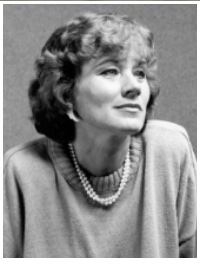
Kathryn Hollett, “Chicki” passed away peacefully at home in the presence of family on Friday, April 21, 2023.
True to form, Chicki’s pancreatic cancer diagnosis last year was met with a determination to live her life on her own terms – with fortitude, elegance, a sense of humor and a renewed commitment to get busy designing the set for AVP’s upcoming production of Mary Poppins. Chicki was a Board member of the Annisquam Village Players, where she worked tirelessly each year since 1992 as Set Designer for the AVP theater productions. She was so passionate about the AVP work that even until the day of her death she was planning the AVP production for Gloucester’s upcoming 400th year celebration.
Her visiting hours will be held in the Greely Funeral Home, 212 Washington Street, Gloucester on Thursday, April 27, from 4:00 to 7:00 p.m. Relatives and friends are cordially invited to attend.
In keeping with her wishes there will be no services and her burial will be held privately.In lieu of flowers, donations can be made to The Open Door https://www.foodpantry.org/ways-to-give/donate/
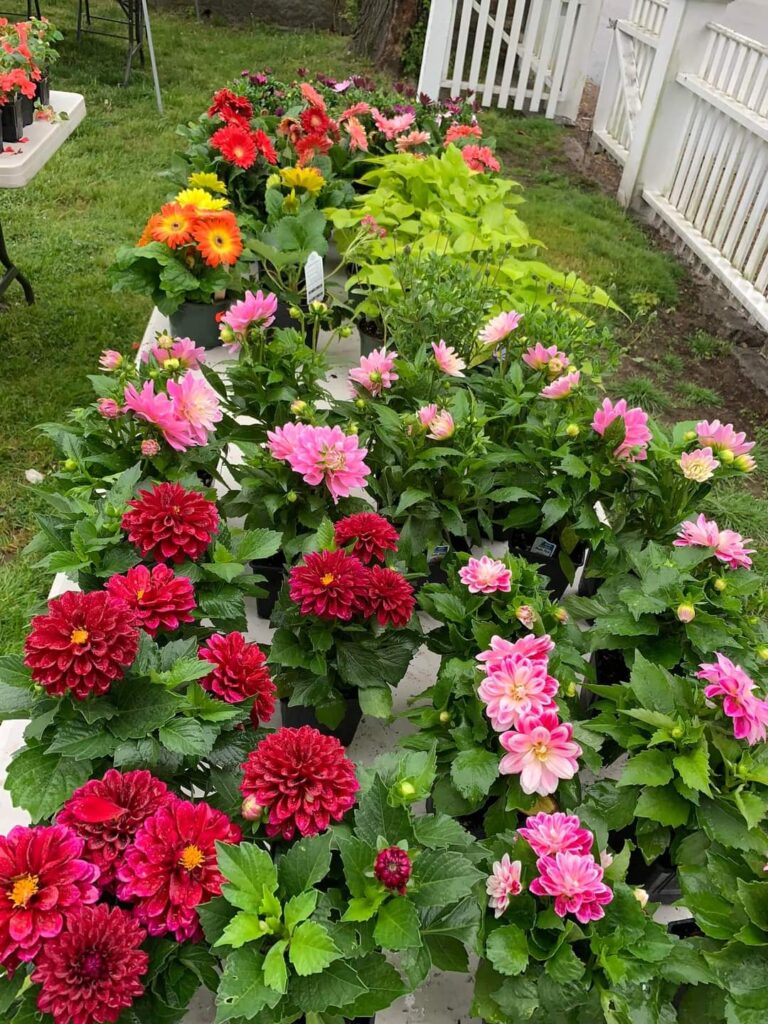
Become a Friend of the Annisquam Sewing Circle – send an email to [email protected] with Friend in the subject line. You can opt-in to receive updates on upcoming ASC events.
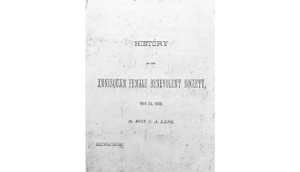 The Origins of the Annisquam Sewing Circle
The Origins of the Annisquam Sewing CircleMiss Charlotte Lane’s booklet The History of the Annisquam Female Benevolent Society is available to read online at:
To read the memoir
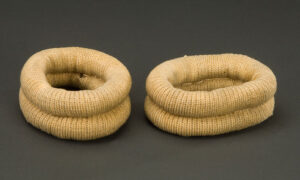
Earlier members of the Annisquam Sewing Circle knit nippers like this pair.
Fishermen working trawl lines in the 19th century often suffered cuts and rope burns on their hands. They typically wore mittens or gloves to protect themselves when hauling the long lines aboard and removing the fish. These sturdy but soft rings, called nippers, are knitted of woolen yarn and stuffed with more wool. They would have fit around a fisherman’s palms, protecting his hands while his fingers remained free for tasks requiring dexterity.
These nippers were probably made in Gloucester, Mass., for use by local fishermen working on offshore schooners. The shallow, fertile banks stretching from Georges Bank east of Nantucket to the Grand Bank off Newfoundland, Canada, were prime fishing areas for Gloucestermen. Cod, haddock, and halibut were the principal species caught by fishermen working aboard schooners in these waters in the late 19th century.
These nippers were among the fishermen’s clothing, tools, and apparatus featured by the United States in the 1883 International Fisheries Exhibition in London.
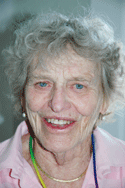 The ladies of the Sewing Circle use to prepare and serve a dinner to the men of the Leonard Club.
The ladies of the Sewing Circle use to prepare and serve a dinner to the men of the Leonard Club.
At a meeting of the ASC Grace Tomlinson Murray, a long-time member shared her memories of an unforgettable evening.
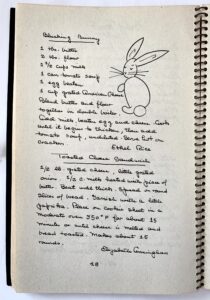
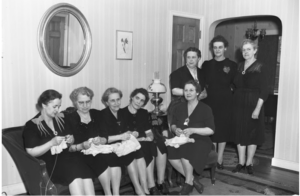 CREATE 2020 Contest: Identity as Inspiration
CREATE 2020 Contest: Identity as Inspiration
‘A girl should be two things: who and what she wants.’ Coco Chanel
Britain is bracing itself for the second lockdown starting this Thursday, moods are varied. This morning I checked in with our local baker, who assured me that they were going to try and stay open this time around, and then I got a message from a dear friend. She said, I finally got my sewing machine out, I am going to get back into sewing with this lockdown, and you should draw! (I am an illustrator and yet I haven’t drawn properly in months, which inevitably has made me question if I am, in fact, still allowed to call myself an artist. Quite a load to carry for a creative lacking creativity.) Post-Covid has stripped me bare to mothering my children and paying the bills, with occasional dips in the cold British seas to stay sanely positive about everything that is happening to us.
For a lot of creatives, their work is the essence of their identity so we can probably agree that it is absolutely paramount to find the time and space to create.
Nayila reminds us that learning new skills and implementing them into new projects is a wonderful way to grow the self and feel replenished. Sarah has written a whole article on the “Doldrums of Creativity”. She observes: ‘it’s not that I don’t have ideas, it’s that I don’t have faith in my ideas. It’s not that ideas aren’t flowing, it’s that in some ways I’m holding myself back from creating them.’ Morgann shares her own story on how to pursue a creative life through sewing. Today I wish you to sit down at your sewing table and make something quite wonderful however small or challenging. If you are a bit like me, struggling to find your creative mojo and with it your own self and identity, the best thing to do is just sew, (or draw in my case).
Image: Sewing Circle 1946
From: The________Thread
Why the Members of the ASC selected Backyard Growers to receive support…

Backyard Growers Mission: We connect kids, families and seniors to healthy food through school, community and backyard vegetable gardens.
https://www.backyardgrowers.org/
Many small amounts accumulate to make a large amount.
What’s the origin of the phrase ‘Many a little makes a mickle’?
A mickle, or as they prefer it in Scotland, a muckle, means ‘great or large in size’. Apart from ‘many a little (or pickle) makes a mickle’ the words only now remain in use in UK place-names, like Muckle Flugga in Shetland (which amply lives up to its translated name of ‘large, steep-sided island’) and Mickleover in Derbyshire (listed in the Domesday Book as Magna Oufra – ‘large village on the hill’). ‘Over’ and ‘upper’ are very common prefixes in English place-names, along with their opposites ‘under’, ‘lower’, ‘nether’ or ‘little’. Examples of these are the Cotswold villages of Upper and Lower Slaughter, and the Hampshire villages of Over and Nether Wallop. The word ‘much’ derives from the Old English ‘mickle’ and has now almost entirely replaced it. ‘Much’ is also used in place-names like Much Wenlock, Shropshire (there’s also a Little Wenlock, of course).
The proverbial phrase ‘many a little makes a mickle’ has now itself been largely superseded by the 18th century ‘look after the pennies (originally, ‘take care of the pence’), and the pounds will look after (‘take care of’) themselves’.